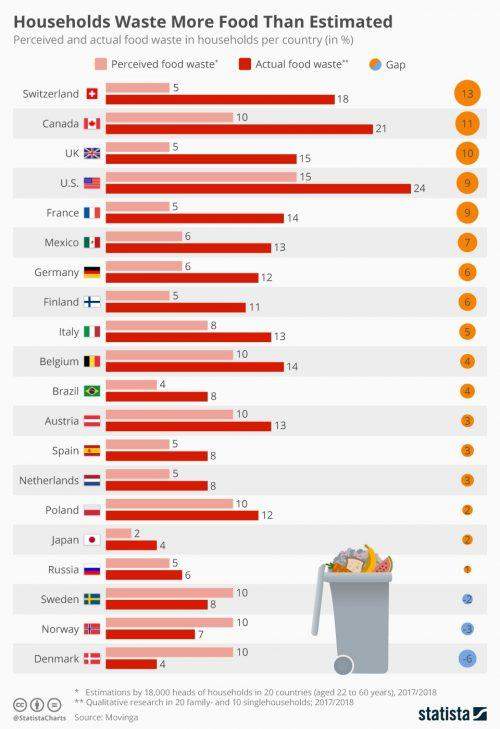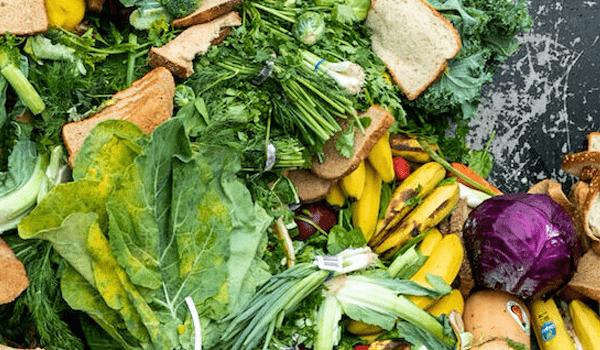|
Listen while working
Getting your Trinity Audio player ready...
|
An estimated 1.3 billion tons of food (33-50% of all food produced) is wasted globally each year, one third of all food produced for human consumption, according to the Food and Agriculture Organization (FAO) of the United Nations. The cost of discarding food waste is approximately $410 billion annually. Food waste or Food growth, the decision rests on individuals.
The amount of food lost or wasted costs in excess of 2.6 trillion USD annually and is more than enough to feed all the 815 million hungry people in the world – four times over. That is 1 in 9 people on the planet who are starving or malnourished.
Consumers in rich countries waste approximately 222 million tons of food yearly, which is almost equivalent to the entire net food production of sub-Saharan Africa (estimated at 230 million tons per year).
The amount of food produced for consumption in developed countries is approximately 900 kg per year per capita, almost twice the amount of food produced in the poorest regions, which is estimated at 460 kg annually.
Food loss: refers to a decrease in mass (quantity) or nutritional value (quality) of food that was originally produced.
At the farm: Inadequate harvesting time, climatic conditions, practices applied at harvest and handling, and challenges in marketing produce.
In storage: Inadequate storage, decisions made at earlier stages of the supply chain that cause products to have a shorter shelf life.
In transit: Good infrastructure and efficient trade logistics are key to preventing food loss. Processing and packaging play a role in preserving foods, and losses are often caused by inadequate facilities, technical malfunction or human error.
Food waste: (food wasted in homes, restaurants and shops, 17%of all food is dumped, around 900 million tons). The causes of food waste are copious spreading throughout production, processing, distribution, retail and consumption.
In the shop: (food services and retail outlets waste 5% and 2%, respectively). The causes of food waste at the retail level are linked to limited shelf life, the need for food products to meet aesthetic standards in terms of color, shape and size, and variability in demand.
In the home: (11% of food at the consumption stage of the supply chain). Consumer waste is often caused by poor purchase and meal planning, excess buying (influenced by over-large portioning and package sizes), confusion over labels (best before and use by) and poor in-home storing.
Environmental Impact
Food wasted or lost has devastating environmental, economic and social implications, contributing 8% to 10% per cent of global greenhouse gas emissions. When you waste food that could have been eaten, you are also wasting the natural and human resources that were used to grow, produce, process and transport that food.
Only five percent of food is composted in the US and as a result, uneaten food is the single largest component of municipal solid waste.
Improper handling of food waste leads to landfill gases from anaerobic digestion of organic matter which is major source of the greenhouse gas methane- a greenhouse gas that is 21 times more potent than carbon dioxide, and un-reclaimed phosphorus in food waste, leads to further phosphate mining. An estimated 7% of greenhouse gases produced globally are due to preventable food waste. Moreover reducing food waste in all parts of the food system is an important part of reducing the environmental impact of agriculture, by reducing the total amount of water, land and other resources needed to feed the global community.
The amount of food thrown away amounts to wasting approximately $1,760 annually for a family of four. And the food that ends up in the waste stream requires resources to manage its disposal and diversion, the cost of which is passed on to municipal utilities and services.
Why do we waste so much food?
Every household and individual is different, according to research a lot of our day-to-day choices, shopping and cooking habits, our food storage and leftovers, all play a role in how much food we waste. These are influenced by demographic and cultural practices prevalent in societies. Among the most common reasons of food being wasted are either excess food items bought (usually fruits and vegetables) or too much food is cocked.

America wastes roughly 40 percent of its food. Of the estimated 125 to 160 billion pounds of food that goes to waste every year, much of it is perfectly edible and nutritious.
According to a 2014 study conducted by Value Chain Management International, the amount of preventable food waste discarded annually in Canada amounts to over $31 billion in losses, with approximately 47% of food waste produced by consumers.

Buying Habits
With globalization and massive transport infrastructure in place, it has become virtually possible to find any vegetable and fruit throughout the world, both fresh and frozen. The supermarkets are flooded with food items and there is lot of impulse buying contrary to requirement. This eventually leads to wastage, since we tend to buy more than our actual requirements.
Excess quantity of food cooked
In majority of cases we tend to cook more food than required, the excess of food in many households is wasted. This is especially the case in hotels and restaurants where a lot of food is left over and eventually gets in garbage bins.
Investment in the food technology space for the first three quarters of 2020 is $8.37 billion, which outpaced the $7 billion raised during all of 2019, according to a new report from Finistere Ventures.

Billion of dollars are being invested to have better crops and increased yields. Technologies like vertical farming and new techniques are being employed in deserts reclaims. Yet the emphasis on food loss is becoming less and less. This is basically a severe lack of education among masses 1and neglect by the effluent people in society.
Asia produces over 50% of global food waste, with the main culprits being industrialized urban areas in the region. Just three countries in Asia combine to make up over a quarter of the world’s wasted food – namely China, Japan and South Korea being responsible for 28% of disposed food. The amount of food wasted in China alone could feed 100 million people, according to figures by Food Navigator.
Save your FOOD
- Shop smart, don’t over buy. Keep track of what you’ve bought and used.
- Store food correctly. Preserving food is the key
- Save Leftovers.
- Donate what you won’t use.
- Keep Your Serving Sizes in Check
- Understand Expiration Dates
- Compost If You Can
There are never-ending means you can reduce, reuse and recycle your food waste. This will not only help reduce food wastage but will also save you money and time as well.





